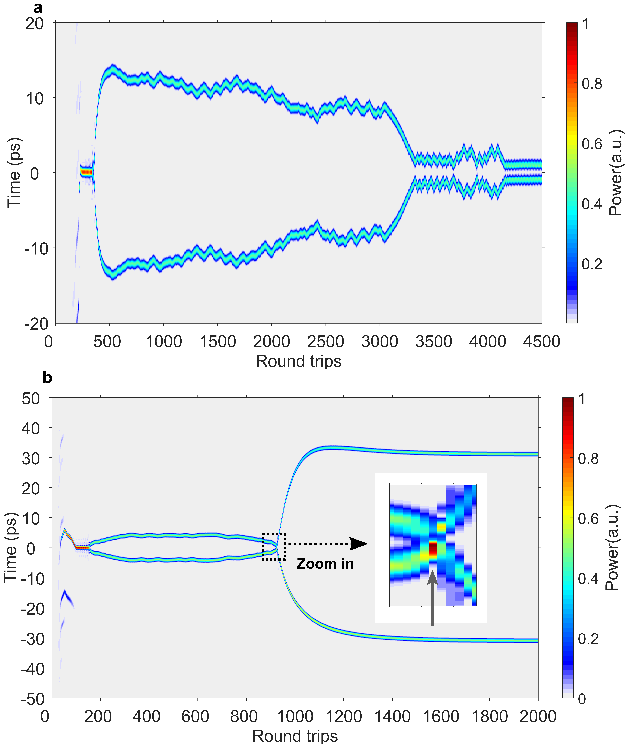Solitons can form bound states that are frequently referred to as soliton molecules as they exhibit molecule-like dynamics. The build-up phase of the optical soliton molecule remains elusive. Here, by means of a time-stretch technique that enables real-time access to the spectral and temporal dynamics, rich nonlinear processes involved in the build-up of soliton molecules are revealed in an ultrafast fibre laser. Specifically, the formation of closelyand well-separated bound solitons are resolved. In both cases, the build-up phases consist of three nonlinear stages including mode locking, soliton splitting, and soliton interactions. For closely-separated bound solitons, soliton interactions display wide diversities in repeated measurements, including soliton attraction, repelling, collision, vibration, and annihilation.
For well-separated bound solitons, repulsive interactions dominate the soliton interactions. Numerical simulations corroborate these experimental observations. Furthermore, a conceptually different soliton molecule, the intermittent-vibration soliton molecule, is discovered and characterized. It is the intermediate state between the vibrational and stationary soliton molecules. The author’s findings could assist in the understanding of the build-up phase of localized structures in different dissipative systems.

图a 是基态孤子分子的形成过程。横坐标代表的是脉冲在激光器内的传输圈数,纵坐标表示时域。可以看出当圈数是500时单孤子分裂成双孤子,随后,双孤子迅速地排斥到最远。此后,双孤子通过吸引作用不断地靠近,进而形成稳定孤子分子(孤子之间的距离不再变化)。图b是激发态孤子分子的形成过程。与基态孤子分子形成有很大的不同,双孤子最后是通过排斥作用达到稳态

